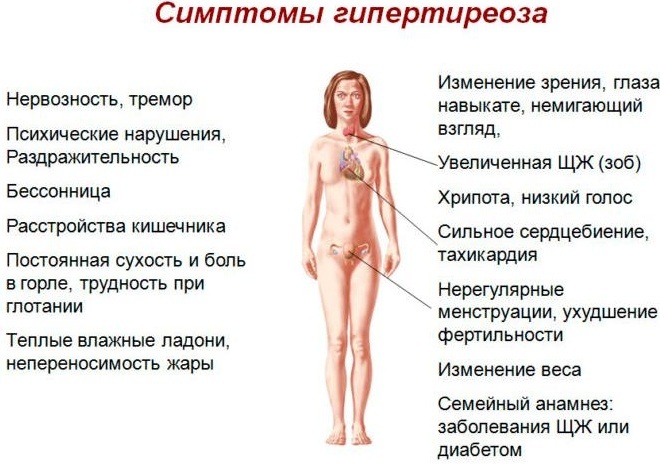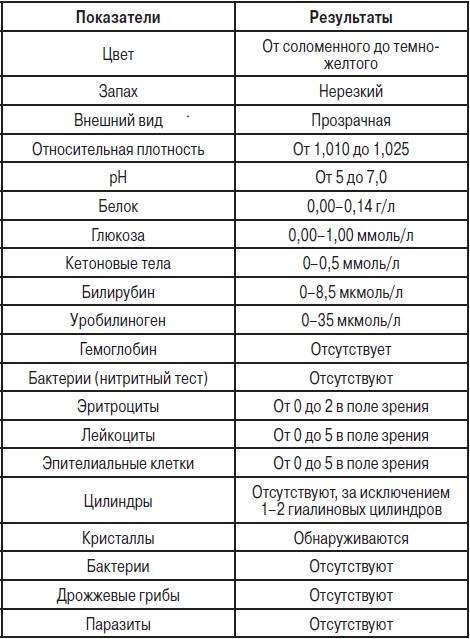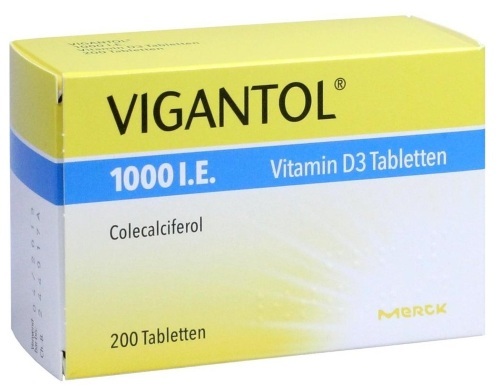Cold sweat a child without a fever does not always indicate the presence of violations. Sweating is a natural physiological mechanism that helps regulate a child's body temperature. Excretion of sweat allows the body to cool down, preventing overheating, and also to maintain the water-salt balance. However, there are cases when excessive sweating becomes a symptom of the disease.
Record content:
-
1 Possible reasons
- 1.1 Hyperthyroidism
- 1.2 Heart disease
- 1.3 Rickets
- 1.4 Hypoglycemia
- 1.5 Tuberculosis
-
2 Diagnostics
- 2.1 Laboratory research methods
- 2.2 Instrumental research methods
-
3 Treatment methods
- 3.1 Drug therapy
- 3.2 Correction of the regime of the day and nutrition
- 3.3 Physiotherapy procedures
- 4 Possible consequences and complications
- 5 Video about sweating in a child
Possible reasons
Thermoregulation is different in infants and older children. Newborns and babies sweat more often. This is due to the immaturity of the vegetative system and the inability of the body to regulate heat exchange.
The release of cold sweats in babies can be triggered by:
- violation of the temperature regime and humidity in the room (the air temperature exceeds 18-20C);
- wrapping in warm clothes or diapers;
- increased excitability;
- feeding;
- poor quality bedding material.
Cold sweat in a child without fever after the age of 1 year may occur due to physiological and pathological processes.
| Natural causes | Pathological conditions |
|
|
The appearance of cold sweat often occurs in the period after an illness, accompanied by a fever. In this case, along with active sweating, the child has a decrease in temperature below 36C.
There are 2 reasons for this condition:
- abuse of antipyretic drugs;
- decrease in heat production.
If, against the background of persistent sweating, the child shows other symptoms, this may indicate the development of the disease.
Hyperthyroidism
Hyperthyroidism is a disease caused by an excess of thyroid hormones produced by the thyroid gland to regulate metabolism. Symptoms of hyperthyroidism in children depend on the degree of development of the disease.
The main manifestations of pathology include:
- increased blood pressure;
- increased heart rate at rest;
- excessive sweating;
- sudden mood swings, irritability;
- weight loss against the background of increased appetite;
- strong pulsation in the cervical vessels;
- bulging of the eyeballs;
- frequent diarrhea.
Heart disease
Heart disease is a disease associated with anatomical changes in the heart valves, septa. As a result, there is a disruption in the work of the heart, which leads to oxygen starvation of internal organs and tissues. Heart defects are congenital and acquired.
The main symptoms of the disease in a child include:
- increase or decrease in blood pressure;
- frequent fainting and dizziness;
- decreased physical activity;
- fast fatiguability;
- cyanosis of the skin;
- shortness of breath;
- excessive sweating.
Rickets
Rickets is a disease of infants and young children associated with impaired bone formation and bone demineralization against the background of a lack of vitamin D, calcium and phosphorus.
The main symptoms of rickets:
- decreased muscle tone;
- deformation of the bones of the skull;
- lagging behind in growth and development;
- noticeable lumps on the bones;
- slowing down the process of overgrowing fontanelle;

Due to a lack of vitamin D3, children develop rickets - increased sweating with a pronounced sour odor;
- sleep disorders;
- increased excitability;
- fast fatiguability.
Hypoglycemia
Hypoglycemia is a condition in which blood sugar levels drop dramatically. Pathology is associated with the development of diabetes mellitus in a child. The most common cause of a sharp drop in blood sugar is inadequate nutrition or increased physical activity.
The manifestation of symptoms depends on the severity of the pathological condition:
| Mild degree | Average degree | Severe degree |
|
|
|
Tuberculosis
Tuberculosis is an infectious disease caused by a pathogen called Koch's bacillus and transmitted by airborne droplets.
The first manifestations of the disease in children include:
- increased tearfulness and nervousness;
- lack of appetite;
- increased sweating during sleep;
- disorders of the digestive system;
- sleep disturbance;
- enlarged lymph nodes and their painlessness;
- the appearance of a dry cough.
Diagnostics
Cold sweat in a child without fever, accompanied by disorders of the nervous system, lack of appetite, sudden weight loss and general weakness, may indicate the presence of pathology. To find out the causes of increased sweating, laboratory and instrumental research methods are used.
Laboratory research methods
If you suspect a disease, the child needs to pass the following tests:
- Detailed blood count. Unlike a regular blood test, a leukocyte formula is included in the expanded one. During the study, the ratio of blood cells to the liquid part - plasma is studied. Blood for analysis is taken on an empty stomach. For 24 hours before the test, the child is prohibited from taking medications. For research, venous or capillary blood is used. The analysis period is 1 day. Cost - 500-700 rubles.
-
General urine analysis. The examination allows you to determine the composition of urine, its organoleptic and physico-chemical indicators. Urine for analysis is collected in a container in the morning. For babies, special urine bags are used. The required volume of urine is 50-100 ml. the collected material should be delivered to the clinic no later than 3 hours from the moment of collection. The cost of the analysis is 150-200 rubles.

- Blood sugar test. The study provides information about the blood glucose level. The analysis does not require specific training. It is enough not to eat food and sugary drinks for 8-10 hours. The collection of material is carried out in the morning. For analysis, venous or capillary blood is used. The results of the study are handed over to your hands within 1 day. Price - 250-300 rubles.
- Comprehensive analysis for vitamins of group D. A study in which the concentration of vitamin D2 and vitamin D is assessed separately The analysis can be supplemented by the determination of calcium and phosphorus in the child's blood. For the study, venous blood is used, which must be collected on an empty stomach. It is not recommended to feed the child 3-4 hours before the test. You can use clean water without gas. Research cost - 2500-3000 rubles.
- Analysis for hormones TSH. Thyroid stimulating hormone (TSH) is the main regulator of thyroid function, produced by the pituitary gland. An analysis to determine the level of TSH allows you to assess the functioning of the thyroid gland and identify possible violations. For research, venous blood serum is used. The analysis is taken in the morning after 10-12 hours of fasting. Before submitting the biomaterial, it is recommended to avoid stressful situations and excessive physical exertion. The price for the analysis is 400-500 rubles.
Instrumental research methods
After passing the tests that revealed violations in the child, the necessary method of instrumental research is selected.
If a heart defect is suspected, an ultrasound of the heart and an ECG are prescribed. Ultrasound of the heart is a study in which the child's cardiac activity is assessed in real time. The essence of diagnostics consists in recording ultrasonic waves reflecting tissues of different densities: myocardium, great vessels, anatomical features of adjacent tissues.
Diagnosis is carried out on an outpatient basis as prescribed by a cardiologist or pediatrician. The procedure takes about 20-30 minutes. The child is laid on his back or left side. The area of the heart is lubricated with a hypoallergenic gel that improves the movement of ultrasonic waves. The required image is displayed on the monitor screen. The cost of an ultrasound scan is 1500-2000 rubles.
ECG is a research method that records the electrical activity of the heart. To measure the heart rate, electrodes are placed on different parts of the body.
Clamps are installed on the limb, and suction cups are placed on the chest. To ensure conductivity, a conductive gel is applied to the skin. The research results are recorded on paper tape. The cost of an ECG is 400-500 rubles.
If hyperthyroidism is suspected, an ultrasound scan of the thyroid gland is prescribed.
Using the diagnostic method, such organ parameters are determined as:
- structure;
- location;
- contours;
- structure;
- sizes;
- the presence of focal formations.
Examination of the thyroid gland takes about 15-20 minutes. Cost - 1000-1500 rubles.
Treatment methods
A cold sweat in a child without fever, caused by an illness, may be the reason for prescribing medication or physiotherapy.
Drug therapy
If hormonal disorders are the cause of increased sweating in a child, they are used for treatment:
- antithyroid drugs - inhibit the synthesis of thyroid hormones
- beta-blockers - allow you to relieve the main symptoms of the disease.
For the treatment of pediatric patients, the following agents are used:
- Thiamazole - a drug in the form of tablets that disrupts the synthesis of thyroid hormones. The initial daily dose of thiamazole in children aged 3-17 years is 0.5 mg per 1 kg of body weight, divided into 3 doses. The maximum daily dose is 40 mg. After the onset of remission, the daily dose is reduced every 5-10 days and the minimum dose is gradually selected. With a severe form of the disease, the course of treatment lasts about 1-1.5 years.
- Carbimazole - a prodrug that is converted after absorption into an active form - methimazole. The tool reduces the production of thyroid hormones T3 and T4. The dosage regimen of the drug is individual and depends on the indications and the therapy regimen.
Treatment of heart disease in children is performed surgically. Therapeutic treatment is supportive and designed to relieve symptoms.
For heart disease, children are prescribed the following groups of drugs:
- antihypertensive drugs;
- anticoagulants.
Antihypertensive drugs are intended for the treatment of arterial hypertension, provoked by a malfunction of the heart.
These include:
-
Propranolol - a drug that lowers the heart rate and reduces myocardial oxygen demand. The tablets should be taken at the same time as eating semi-liquid food. The initial dose for children is 0.5-1 mg per 1 kg of body weight, divided into 2 doses. The duration of treatment is determined individually.

- Prazosin - a drug in the form of tablets, which promotes the expansion of the venous walls of the peripheral veins and reduces the load on the heart. The dosage regimen is set individually. The initial dose is 500 mcg, divided into 2-3 doses. The maintenance dose is 4-6 mg per day.
Anticoagulants are used to treat and prevent thrombotic complications in children.
The group of drugs includes:
- Heparin - the drug is administered subcutaneously, intravenously or by drip. The starting dose for children is 75-100 IU per 1 kg of body weight. The dose is given as an intravenous bolus over 10 minutes. Children aged 1-3 months - 25-30 IU per 1 kg, 4-12 months - 25-30 IU per 1 kg. Children over 1 year old are 18-20 IU per 1 kg intravenously.
Cold sweat in a child under 3 years old, without fever and signs of intoxication, may indicate a lack of vitamin D, which leads to the development of rickets.
For the treatment of pathology, a set of measures is used, among which drug therapy is distinguished using the following means:
- Vigantol;

- Tocopherol;
- Panangim;
- Glycine;
- Vitamin D.
Correction of the regime of the day and nutrition
Excessive sweating without symptoms indicates that the child is hot. When excessive sweating is associated with a violation of the temperature regime in indoors, the child is uncomfortable, so it is important to follow the rules:
- the air temperature in the room should not exceed 18-20C;
- in winter, it is recommended to use humidifiers to humidify dry air;
- the child's clothing should be made of natural fabrics;
- in the summer, you should use light cotton plains or diapers;
- the room where the child sleeps should be regularly ventilated.
If the cause of increased sweating of the child lies in rickets, in addition to medications, correction of the daily regimen and nutrition is indicated.
Primary requirements:
- stay in the fresh air for at least 2-3 hours a day, daily;
- correction of the mother's nutrition if the child is breastfed (regular consumption of large amounts of protein foods is necessary);
- a specially selected mixture an adapted mixture with vitamin D content is required if the child is artificially fed;
- daily therapeutic exercises;
- regular good sleep in accordance with the age requirements of the child.
Physiotherapy procedures
In the treatment of rickets in children, a complex of physiotherapy methods is used, among which there are:
- Quartzization - the process of irradiation with ultraviolet light under a quartz lamp, which helps to increase the intake of vitamin D into the child's body. The procedure is prescribed in winter with a lack of sun.
- Electrophoresis - the effect on the body of a weak direct electric current, which promotes the rapid penetration of drugs under the skin. With the help of the procedure, the missing enzymes, vitamins, microelements are introduced into the child's body.
- Coniferous and salt baths favorably affect the nervous and cardiovascular system of the child, improve thermoregulation and metabolic processes. Coniferous baths have a calming and relaxing effect.
Possible consequences and complications
If the child sweats frequently during the daytime for no reason at normal air temperature, loses weight, quickly gets tired, irritated for no reason and does not sleep well, then, perhaps, the reason lies in the course of the pathological process.
Ignoring the symptoms can lead to the development of complications:
- with hyperthyroidism - disorders of the heart, increased fragility of bones, the development of a thyrotoxic crisis;
- with rickets - growth retardation, curvature of the spine, bone deformation, dental problems, convulsions;
- with heart disease - heart failure, thromboembolic complications, disability, death;
- with tuberculosis - pulmonary hemorrhage, tuberculous pleurisy, development of tuberculous pneumonia and pulmonary insufficiency.
Cold sweat in a child, not accompanied by an increase in temperature, occurs in response to external factors - heat, low humidity in the child's bedroom, synthetic clothes and low-quality bedding accessories. If sweating is accompanied by symptoms of the disease and is protracted, you should contact your pediatrician for diagnosis and treatment.
Video about sweating in a child
Komarovsky about sweating:



